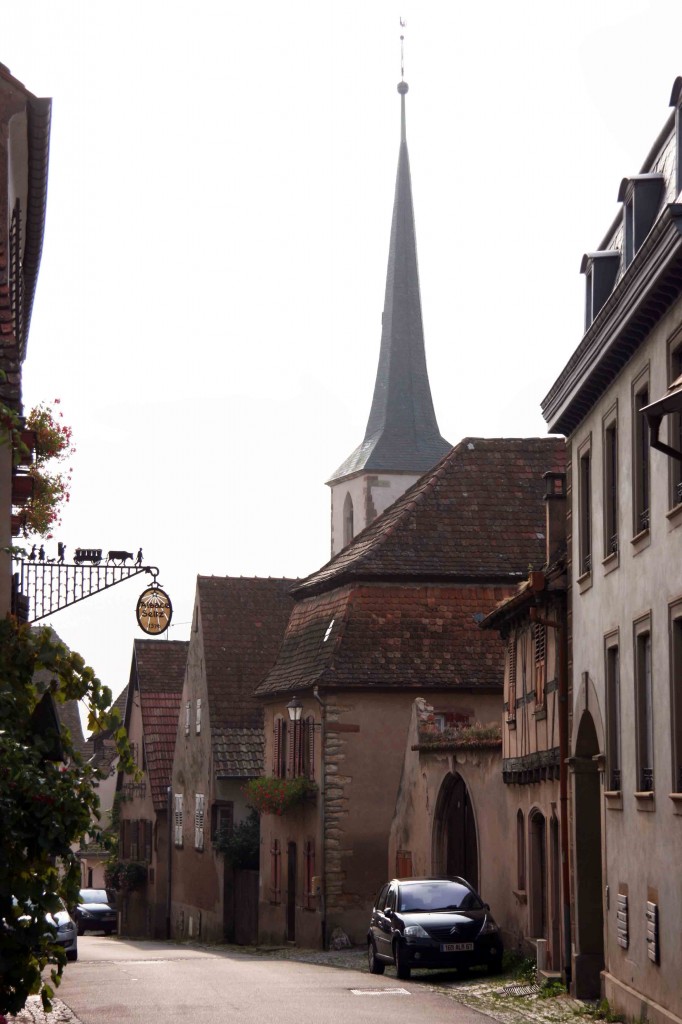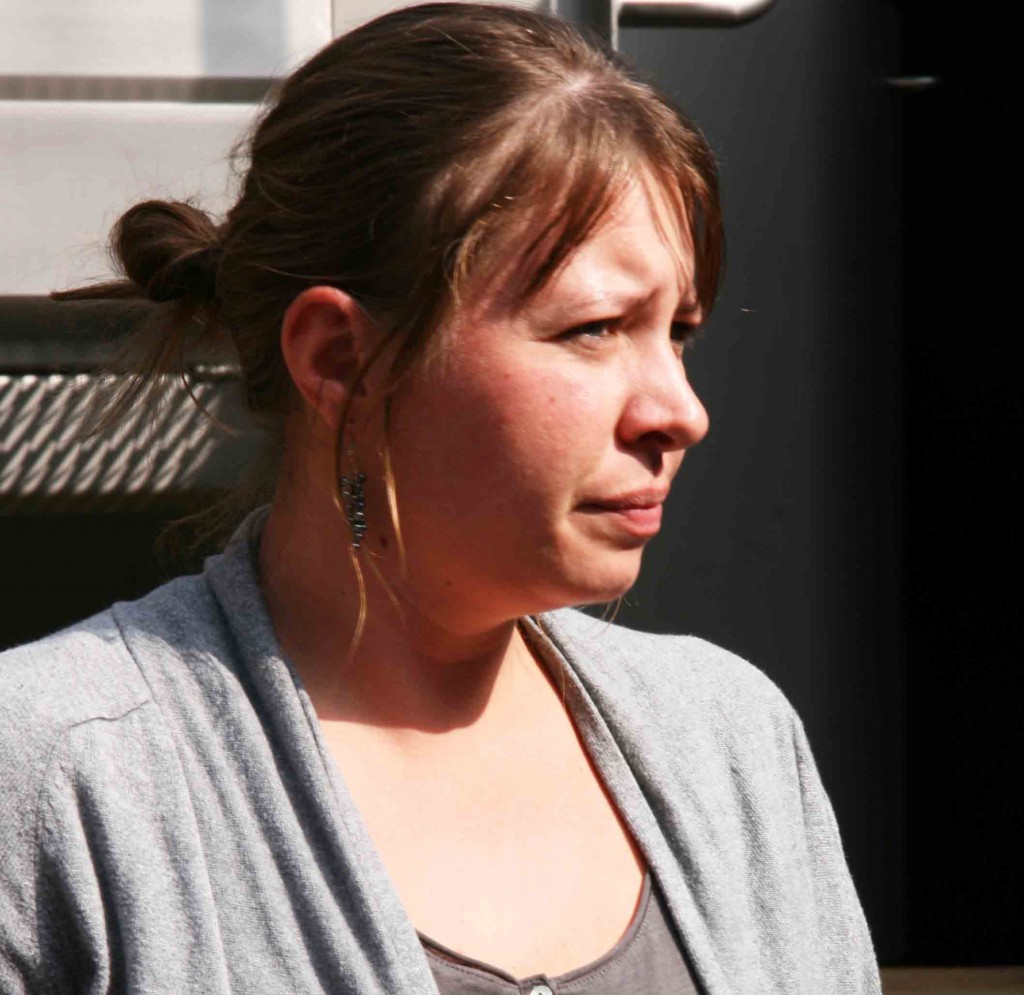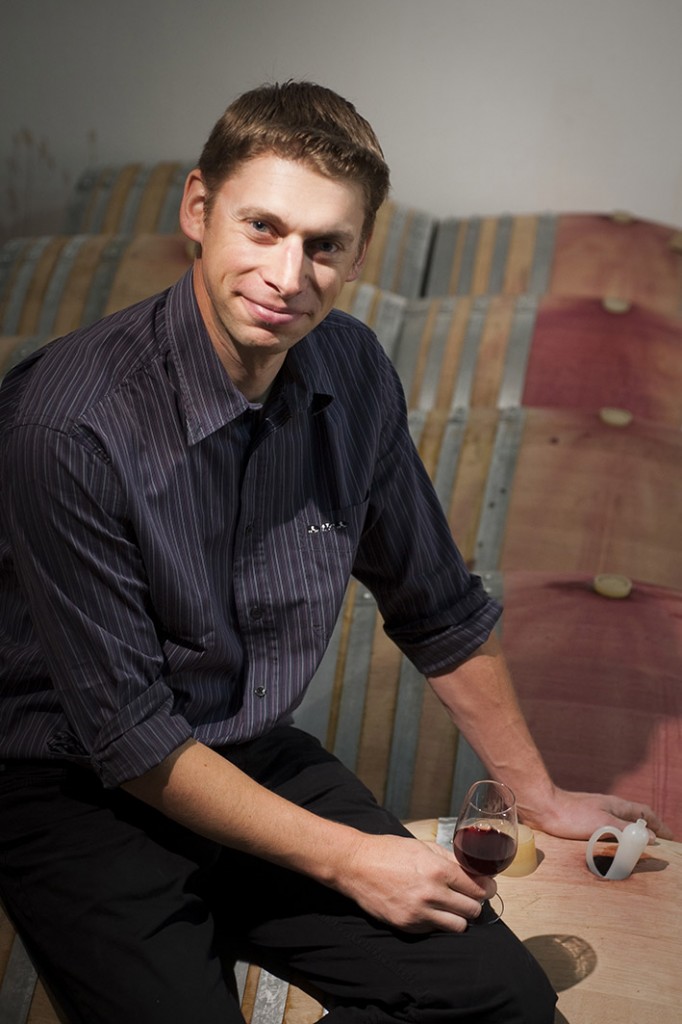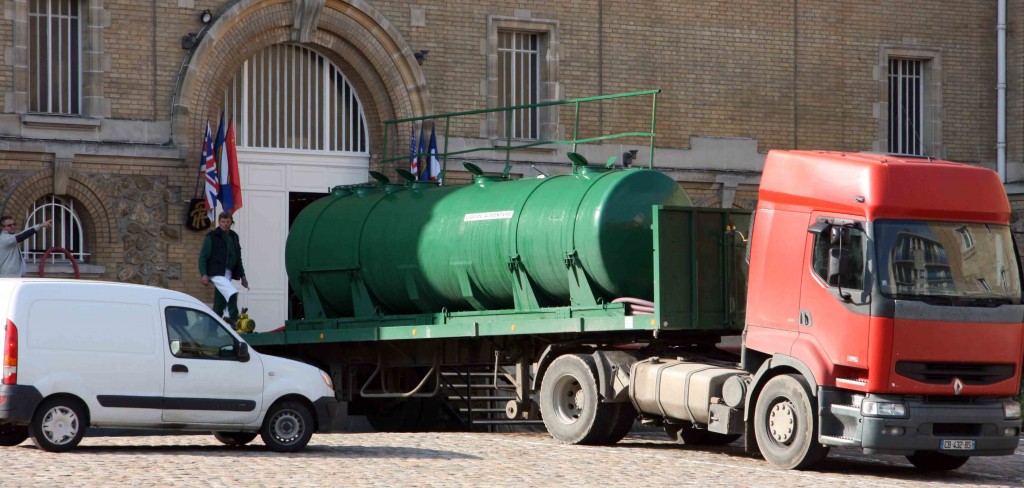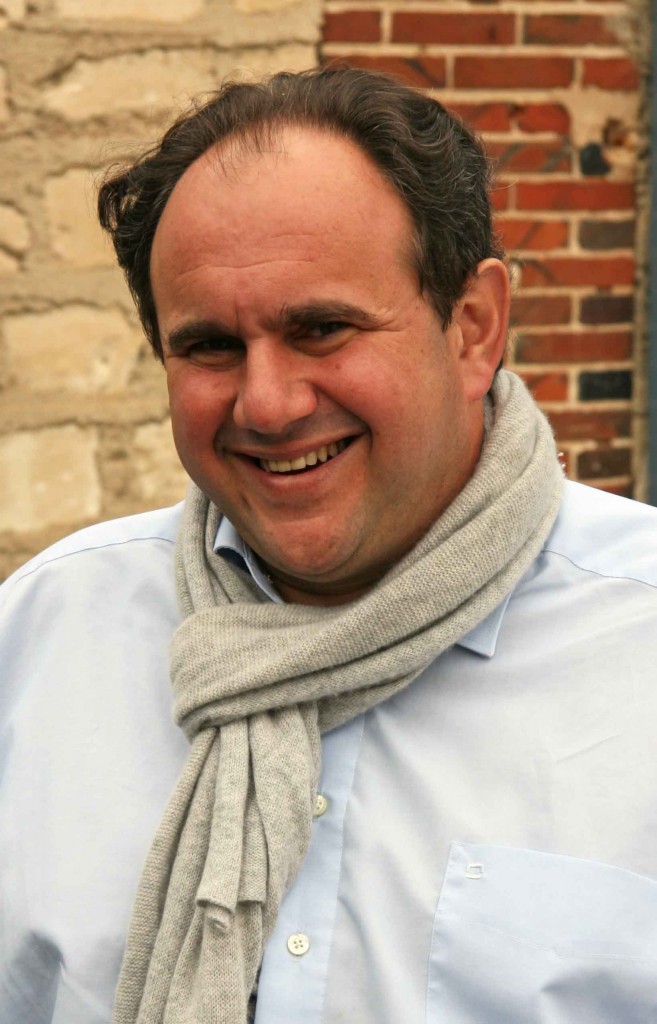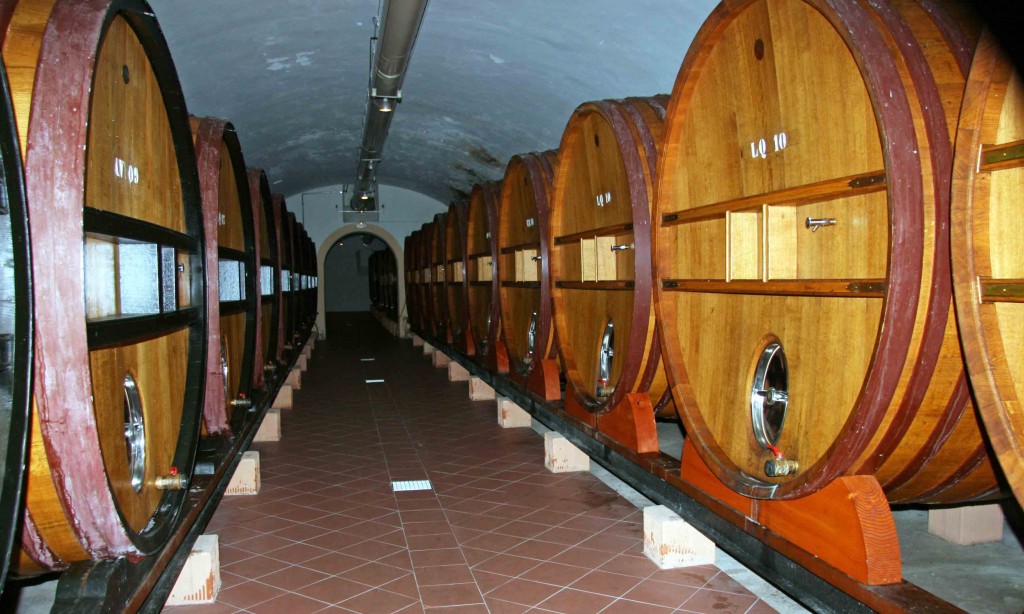Bordeaux 2009 produced some superb wine. It is not uniformly great, but the praise lavished on it, even before the harvest was complete, is justified on the evidence of the annual Bordeaux tasting held by the Institute of Masters of Wine on 7 November. It offered a marvellous opportunity to taste 106 of the best wines, a year or so after bottling.
After a successful flowering and fruit set, a warm, sunny summer produced high sugar levels and with good reserves of ground water, the vines were not stressed. The only real concern was that full phenolic ripeness proved a little stubborn. Fine weather into October rewarded the patient and acid levels did not drop as low as some growers feared.

This tasting confirmed earlier impressions that the best wines were made on the left bank, especially in the Médoc. 2009 was a glorious year for Cabernet Sauvignon. The right bank wines can be very good too, but with high alcohol, and a balance in which tannin levels are relatively high and acidity relatively low, the Merlot-based wines sometimes lack the finesse and elegance so evident in Pauillac and Saint Julien.
2009 is also proof that no vintage ‘makes itself’. Some winemakers managed to express the superb quality of the fruit with deft restraint, others seem to have been so dazzled by it that they tried too hard to extract every last drop of flavour from it. High pH also means many wines were open to spoilage by brettanomyces, but only rarely was I aware of this in the finished product.
More worryingly, perhaps, although we found few examples of TCA in the samples provided for the tasting, there was often quite a lot of bottle variation. One striking example was Cos d’Estournel. Why this should be so is rather a puzzle.
In keeping with the way Bordeaux these days, many of these wines are perfectly approachable now though they will undoubtedly mature well and reveal much more.
Here are my notes. They are, perhaps inevitably, a series of snapshots rather than a deeply considered assessment. I didn’t quite manage to taste every wine, but tried to cover as much ground as possible. I’ll follow the traditional order of the MW tasting, but have integrated the first growths into their respective appellations.
Pessac-Léognan/Graves
The wines are generally perfumed, though less than in Margaux. Most show elegance, balanced by a sturdy acidic and tannic structure.
Château Bouscaut
Perfumed, though just a little green. Fresh acidity and firm tannins, again just a little green and unripe, a little light, but otherwise elegant.
Château Carbonnieux
Ripe, perfumed black fruits. Fresh acidity and firm, but ripe tannins. Medium body and concentration. Just a little short.
Château de Fieuzal
Ripe, perfumed and complex. Medium acidity with rather more tannic, which is a little dry. A long, scented aftertaste.
Château Haut-Brion
Perfumed black fruits – already quite open. Fresh, elegant, sweet and long.
Château Marlartic-Lagravière
Again perfumed, elegant and complex – especially perfumed in the mouth with fresh acidity and ripe tannins.
Château La Mission Haut-Brion
As perfumed as any in the appellation and more elegant than most, but also spicy, complex and very long. Balanced acid and tannins, but neither stick out.
Château Olivier
Quite concentrated and ripe with black fruits. Long, but chunky and just a little over-extracted.
Château Smith Haut Lafitte
Even more black and concentrated, with obvious new oak. A powerful wine.
Domaine de Chevalier
Perfumed with more new oak, and a complexity in which Brett plays a part.
Very ripe with quite low acidity.
Haut-Médoc
Château Cantemerle
Scented black fruits – a little closed. Fresh, juicy acidity, quite firm tannins, a long, perfumed finish.
Château La Lagune
Rather a savoury, meaty aroma. Hefty structure: ripe but chunky.
Margaux
As with the Graves the word ‘perfume’ pops up in most of my notes. It is merited – these wines really do express the typicity of their terroir – as do also those of the other leading appellations of the Médoc. Quality, as so often in Margaux, is not quite a homogenously high as in St Julien or Pauillac. A few wines are a little too extracted, with dry tannins.
Château Giscours
Quite complex and perfumed, with fresh acids and rather dry tannins. It need time.
Château d’Issan
Sweetly ripe and perfumed, with rather chunky, chewy tannins.
Château Kirwan
Fresh and perfumed, with spicy new oak too. Medium acidity but rather dry tannins, then a nicely perfumed aftertaste.
Château Lascombes
Lighter than most, but perfumed. Open, sweet and quite soft.
Château Margaux
Very, very perfumed – almost to the point of volatility, but then a lovely balance – fresh, perfumed fruit – the very essence of Margaux – ripe but supremely elegant.
Château Marquis de Terme
Very perfumed and ripe, almost overripe. Quite tight tannins and fresh acidity. A bit short.
Château Palmer
A model of perfumed elegance married to real concentration. Sweetly ripe and complex with a fine structure and balance. Very long.
Château Prieuré-Lichone
Relatively lacking in complexity, but fresh and perfumed. Ripe tannins. A bit short.
Château Rauzan-Ségla
Another wine lacking complexity, but it’s sweetly ripe, with black fruit and a little short.
Château du Tertre
Fresh, but slightly stalky and not too complex. Sweetly ripe and a little short.
Saint Estèphe
True to type, the wines are big and structured.
Château Calon-Segur
Sweetly ripe and relatively simple, with ripe chunky tannis and a good length of ripe, black fruit.
Château Cos d’Estournel
The best bottle showed a real concentration of ripe black fruit with a slightly herby perfume. Sweetly ripe, with medium acidity, quite soft but persistent tannins and good length.
Château Cos Labory
Tight and a bit closed. Fresh acidity, ripe but earthy tannins.
Château Lafon-Rochet
Again, sweetly ripe. Fresh acidity, firm tannins, medium length.
Château Montrose
Big, ripe and black. Powerful, structured and quite long.
Saint-Julien
Some gloriously fruity, balanced, elegant wines – overall very successful.
Château Beychevelle
Very perfumed, ripe fruit. Fresh, beautifully balanced, elegant and very long. Classic Saint-Julien.
Château Branaire-Ducru
Quite rich, ripe and perfumed. Fresh acid, rather chunky tannins, but good length.
Château Gruaud Larose
Distinct smell of coffee with spice and chocolate. A little austere, with dry tannins. A bit closed.
Château Lagrange
Bottle variation – the best was perfumed, concentrated, but a bit quite extracted, with dry tannins.
Château Langoa-Barton
Big, ripe and quite forward, with chunky tannins. Fresh, but lacks the style of Léoville Barton.
Château Léoville-Barton
Quite tight, with a lovely perfume, very fresh acidity, firm tannins. Long, elegant, promising, classic.
Château Léoville Las Cases
Generously fruity, elegant and perfumed. Perfect balance: fresh acidity and firm, ripe tannins. Immensely elegant, very long. A glorious wine – my favourite in the whole tasting.
Château Léoville-Poyferré
Big, ripe and concentrate. A bit closed. Balanced with fresh acidity, ripe tannins and an impressive depth of fruit.
Château Talbot
Lovely, ripe, sweet nose. Fresh acidity, ripe tannins. Very fruity. Not too long, but delicious.
Pauillac
A very impressive range of wines. The best show a superb balance between power and finesse.
Château d’Armailhac
Ripe and fruity. Balanced and fine, it is just a little short.
Château Batailley
Very perfumed and concentrated with black fruit. Ripe, with firm tannins, fresh acid and yet elegant. Long.
Château Clerc Milon
Ripely perfumed. Strong but ripe tannins and good length.
Château Croizet-Bages
A big, spicy aroma and black fruit. Initially soft tannins, which then become dry. Rather low acidity and a little over-extracted.
Château Duhart-Milon
Elegant, perfumed black fruits – very Cabernet. Big tannins, fresh acidity, chewy, long and needing time.
Château Grand-Puy Ducasse
A big, concentrated aroma of liquorice. Quite chunky tannins, slightly low acidity and just a bit one-dimensional.
Château Grand-Puy-Lacoste
Fresh, spicy and elegant with black fruit and also a touch of liquorice. Sweetly ripe with quite fresh acidity and firm tannins.
Château Haut-Bages Liberal
Ripe and perfumed. Less complex than some. Sweet, fresh and a little short.
Château Haut-Batailley
Ripe and elegant. A little closed though quite perfumed. Fresh, but with firm tannins.
Château Lafite-Rothschild
Perfumed and concentrated. Very complex, with new oak showing. On the palate, power, perfume and elegant complexity all combine and it has an exceptionally long, again perfumed finish: a superb wine.
Château Lynch-Bages
Fruity, with black fruits and elegant – quite perfumed. Juicy acidity and slightly dry tannins, but long and fine.
Château Lynch-Moussas
Very perfumed and spicy, though also a little stalky. Medium acidity and rather dry tannins.
Château Mouton-Rothschild
Big, ripe essence of Cabernet Sauvignon, though perhaps lacking a little in complexity. Sweetly ripe, with similarly ripe tannins. A surprisingly light mid-palate.
Château Pedesclaux
Ripe, sweet and quite elegant, with fresh acidity, firm tannin and good length. Just lacks a little finesse.
Château Pichon-Baron
More perfumed than its neighbour, Pichon-Lalande and very elegant. Fresh acidity and firm tannins. Real depth, complexity and length, but just a hint of Brett?
Château Pichon-Lalande
Elegant, perfumed blackcurranty fruits. Fresh acidity and tight, dry tannins: the Cabernet Sauvignon shines through strongly in a wine which normally has a high percentage of Merlot.
Château Pontet-Canet
The most opulent Médoc in the tasting – very rich and ripe, complex and yet a little closed. Good, but not raised acidy, plenty of ripe acids – in fact a super balance and then tremendous length.
Saint-Emilion
There are undoubtedly some very fine wines here, but quality is a little variable, with one or two noticeable disappointments. Excess alcohol and over-extraction are to blame.
Château Angelus
Big, ripe and chunky. Sweet fruit, strong dry tannins. A good wine, but overshadowed by the other first growths.
Château Beau-Séjour-Becot
Concentrated and perfumed with new oak. Fresh acids in the context of the appellation with sweet ripe tannins. Elegant and fine.
Château Bélair-Monage
Big, sweet and ripe. Moderate tannins and acidity. Quite concentrated, perhaps just a little over-extracted.
Château Bellevue
Big, sweet and ripe – caramel rich, with moderate acidity, silky ripe tannins and high alcohol.
Château Canon
Elagant and ripe, if a little pruney. Medium acidity and soft, very ripe tannins. A fine, long, elegant finish.
Château Canon La Gaffelière
Very ripe and concentrated, with plummy fruit, moderate acidity, very firm tannins. A rich, powerful wine spoilt slightly by rather a dry, over-extracted finish.
Château Cheval Blanc
Ripe, sweet and complex and pruney – a truly exciting nose. Sweet and balanced, with far better balanced acidity than most in the appellation to support the firm tannins. Very good indeed.
Château Corbin
Very sweet, ripe aromas of red fruits. Again moderate acidity and strong tannis. A little austere and iron-like at the end.
Château La Dominique
Complex and perfumed. A big, ripe wine that follows the pattern of moderate acidity and stronger tannins. Long and chewy.
Château Figeac
Ripe, elegant and perfumed. Quite fresh acidity and firm tannins. Long and fine.
Pomerol
A powerful bunch. The best manage to cling to elegance and seem to make the most of Cabernet Franc to add freshness.
Château Beauregard
Big, ripe and sweet. Quite fresh acidity, supple tannins. Just a little short.
Château Le Bon Pasteur
Big, ripe, almost raisiny and concentrated. Good acidity but strong, rather extracted tannins.
Château Clinet
Big, powerful and ripe. Sweet and rich, with moderate acidity and very ripe tannins. A slightly earthy finish.
Château La Conseillante
Ripe, with pruney, raspberry fruit. Quite fresh acidity, strong, dry tannins. Plenty of red fruit favours and quite long.
Château L’Église Clinet
The fresh raspberry scent of Cabernet Franc is evident in quite a rich wine, with balanced tannins and acidity – neither excessive. Not too long.
Château La Fleur-Pétrus
Big, savoury, meaty aromas with chocolate. Moderate acidity, strong tannins. Rich, powerful and quite long.
Château Gazin
Perfumed, almost herby and minty – a bit a surprise, but lovely balance, it shows both freshness and elegance. Long too.
Château Nenin
Sweetly ripe and a little pruney. Ripe with a good balance between tannin and acidity. Quite concentrated and long.
Château Petit Village
A little lighter colour than I’d expected. A ripe, rather savoury nose. Balanced, with a slightly earthy finish.
Château La Pointe
Ripe and pruney with sweet fruit, and quite soft tannins. Medium length.
Clos René
Deep, slightly stalky and earthy. Big and rich, with quite chunky tannins.
Domaine de L’Église
Quite perfumed and fresh, with underlying pruney, very ripe fruit. Rich and very ripe. Moderate acids and tannins.
Sauternes and Barsac
Despite the fact that 2009 is reputed to be a year with high levels of botrytis, the wines, though sweet and opulent, show good freshness and often a rather more bitter, almost phenolic finish than I might have expected. They are very concentrated and powerful.
Château Climens
Very ripe, peachy and complex. Concentrated, powerful, almost spicy. A touch of bitterness.
Château Coutet
New oak shows, but also very ripe, sweet, peachy fruit. Quite fresh acidity. Again a touch of bitterness.
Château Doisy-Védrines
Ripe pineapple aromas and flavours. Quite fresh acidity; very sweet, with a soft finish.
Château Filhot
Lighter and more citrus – lemony. Sweet, but fresh. Another wine with a slightly bitter finish.
Château Guiraud
Ripe, with intense apricot and peach fruit, quite fresh acidity and an almost herby perfume in the mouth. Bitter finish.
Château de Myrat
Rather closed, with confit lemon aromas. Fresh acidity, a little less sweet than some, but alcohol also shows a little.
Château de Rayne Vigneau
Ripe, peachy and concentrated. Sweetness balanced by lemony acidity. It has quite a bitter finish.
Château Rieussec
Very concentrated but also very fine, with an intense marmalade quality of fruit. The sweetness is balanced by quite fresh acidity.
Château Sigalas Rabaud
Quite elegant and relatively light with peachy fruit, lemony citrus acidity and a little bitterness.
Château Suduiraut
Very concentrated, with intense apricot and orange marmalade fruit. Very sweet – fully botrytised, with a bitter twist.
Château La Tour Blanche
An intriguing nose of apricot with ripe green plums. Very sweet, a touch bitter.
Château Clos Haut Peyraguey
Rich, botrytised apricot fruit. Concentrated and sweet, with a little less acidity than many.
